There are a variety of tiny black bugs that look like poppy seeds and can affect plants in the garden and at home. Some of these tiny black bugs only affect plants, but others can also bite humans. In this article, I will describe all the tiny black bugs that look like poppy seeds.
Some of these insects, such as moss mites, are harmless to plants and people. But other insects such as ticks can be very dangerous to people and pets living in the home. But don’t worry, in this article I will also explain preventive methods to avoid having to deal with these insects.
Table of Contents
Bed Bugs
Bed bugs are tiny black bugs that look like poppy seeds. When they have not yet eaten the bugs are flat and black in color. Bed bugs feed on blood and swell up like ticks when they bite humans.
It is a little difficult to identify bed bugs when there are few in the home, the best thing to do is prevention. Bed bugs do not like well-ventilated and well-lit places. With a steam cleaner, you can eliminate bed bugs at an early stage, but if you have too many bed bugs in your home you should call a professional exterminator.
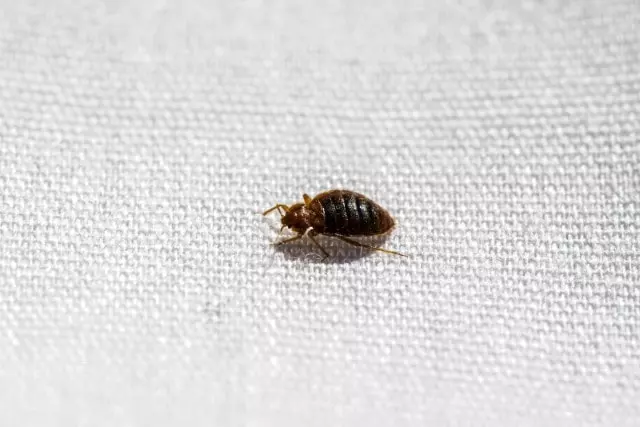
Aphids
The most common aphids that resemble tiny black bugs that look like poppy seeds are the black citrus aphid (Toxoptera aurantii) and black peach aphids (Brachycaudus persicae). Aphids can destroy plants in the garden and at home, plus aphids secrete honeydew, which attracts ants.
To avoid aphids, different species of plants that repel aphids such as lavender, lupine, mint, and nettle can be planted. On plants that are more susceptible to aphid attacks, I recommend planting one of these aphid-repellent plants nearby.
But if aphids are already in the garden and are attacking the plants, it is best to use neem oil, which is natural and safe. Neem oil cannot be used on all plants equally, so I recommend our article about what plants not to use neem oil on.
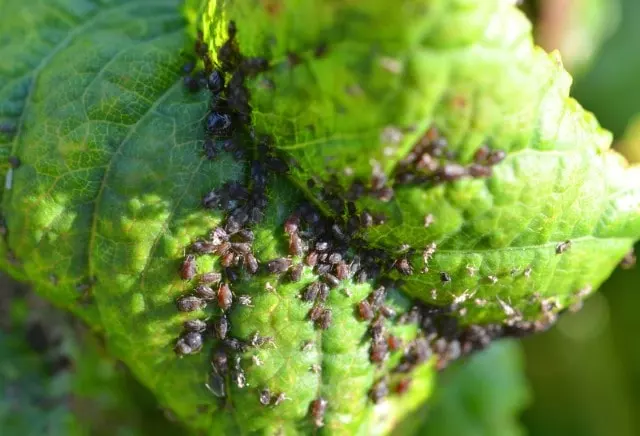
Ticks
The ticks, when they have not yet been bitten, resemble tiny black bugs that look like poppy seeds. Once they bite and consume blood, the ticks swell and have a brownish color. Ticks are carriers of various pathogens that can affect humans and animals, and this article on the biology of ticks may be of interest.
Keeping the lawn short and clearing dry leaves from the yard will help prevent ticks. Ticks are usually on the foliage waiting for a person or animal to pass by. Always check your clothing and pet after being outdoors if the foliage was very dense.
It would be best if you use a special tick repellent when you are going to be outdoors for a long time. With Julia, we like to hike a lot, and we use repellent to keep our minds at ease and have fewer worries.
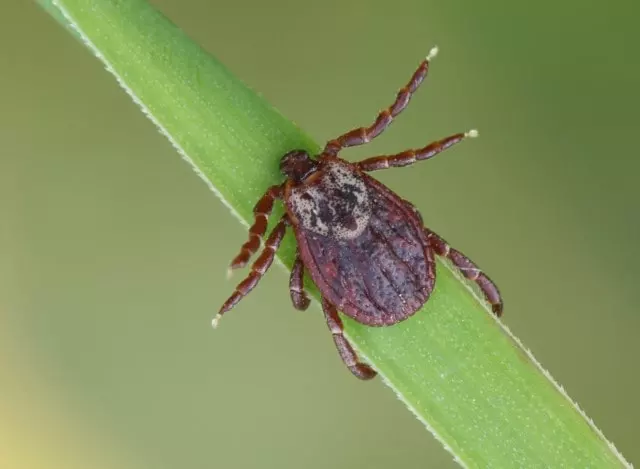
Moss Mites
Moss mites are tiny black bugs that look like poppy seeds, also known as beetle mites, oribatid mites, and Oribatida. Beetle mites feed on diseased or dying leaves, they do not cause any damage to healthy plant leaves.
These tiny insects are beneficial for the decomposition of organic matter. For example, if you see moss mites in your compost bin, it is a good sign. Moss mites do not harm plants, nor do they bite humans and pets.
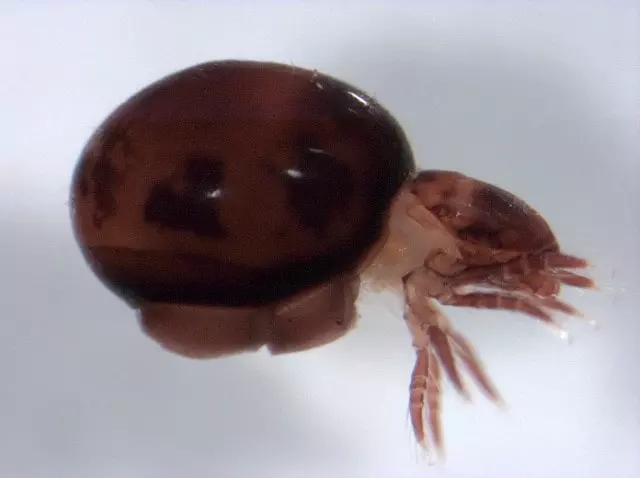
Flea Beetles
Flea beetles are tiny black bugs that look like poppy seeds (1/16 -1/8 inch long). The University of Minnesota explains that these beetles feed on leaves and stems. Generally, the flea beetle makes tiny 1/8-inch holes. Flea beetle larvae do less damage to the plant than adult flea beetles.
To get rid of flea beetles, spread diatomaceous earth on your plants on a day when it is not too windy. I recommend our article about how to use diatomaceous earth. Diatomaceous earth is ecological and safe, but it eliminates all types of insects.
Alternatively, if you do not want to use diatomaceous earth, you can use neem oil to eliminate flea beetles. Neem oil is organic and safe, I recommend you read our article about how to apply neem oil.
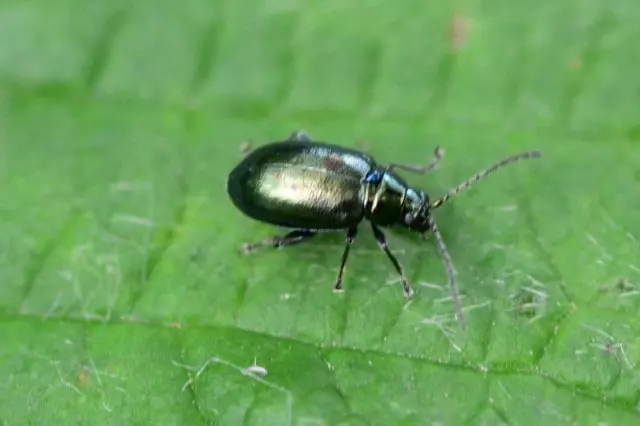
Thrips
Thrips look like brown seeds, but thrips droppings do look like tiny black bugs that look like poppy seeds. On a plant with thrips, you will notice that as these insects feed, they will leave tiny black droppings on the stem and leaves.
To get rid of thrips you can use neem oil or diatomaceous earth as mentioned above. Another good option to get rid of thrips is to use sticky traps that are very economical and effective.
Thrips can be a bit difficult to get rid of, so the best thing to do is prevention. As soon as you see any thrips on your plants start treatment with the tools mentioned above.
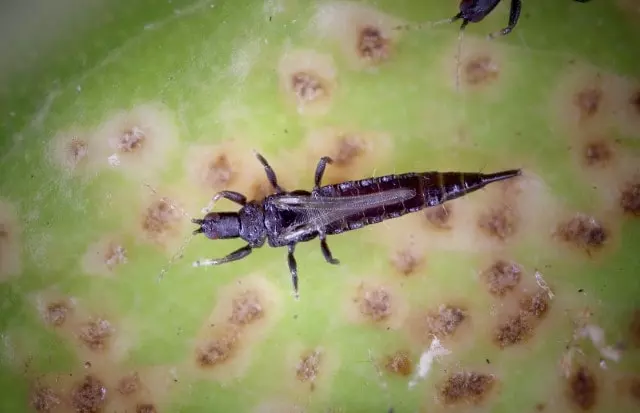
Fungus Gnats
Fungus gnats usually appear when there is an excess of organic matter in the substrate or with certain conditions of illumination. These insects do not do much damage to plants, but their larvae feed on plant roots and reproduce rapidly.
To get rid of these tiny black bugs that look like poppy seeds, it is best to use diatomaceous earth on the substrate (it will eliminate the larvae) and sticky traps to catch the fungus gnats. For more information, I recommend reading how to get rid of gnats in plants.
These tiny insects like humidity and the best way to prevent fungus gnats from appearing are not to overwater houseplants. A soil that is too wet will favor the appearance of fungus gnats.
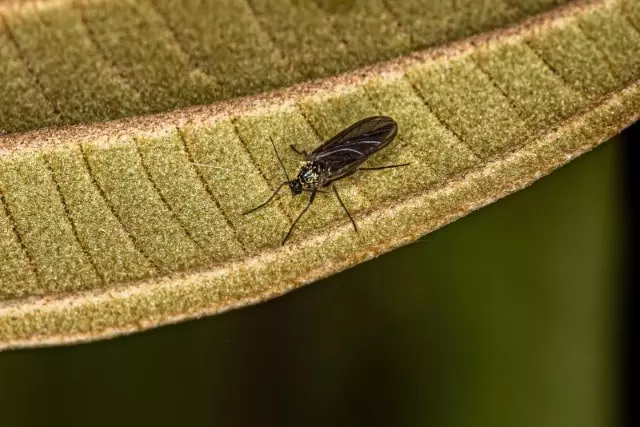
Black Vine Weevil
Black vine weevils are another tiny black bug that look like poppy seeds, to me, they are the closest to a poppy seed. Its scientific name is Otiorhynchus sulcatus, and it is native to Europe but is also found in North America.
The black vine weevil does not harm people or pets, but it does harm plants. The larvae of the black vine weevil feed on plants and can cause significant crop damage. Neem oil, diatomaceous earth, or sticky traps can be used to get rid of the black vine weevil.
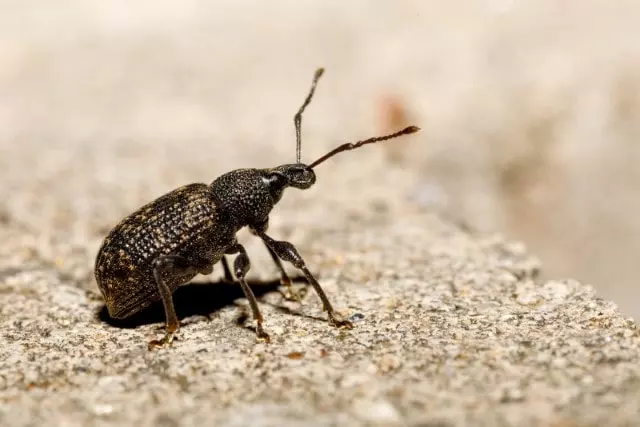
Final Conclusions
Many tiny black bugs look like poppy seeds and are present in the garden or home. Some of these tiny insects are harmless and others can be very harmful to plants or people like the tick.
For harmless insects, there is no need for any prevention method, but for those that can cause damage, I always recommend using prevention methods. I hope this article will be useful and that you will be able to identify more easily the tiny black bugs that look like poppy seeds.
If you still have questions regarding the insect you found in your garden or home, do not hesitate to contact us through the contact form, so we can help you.


